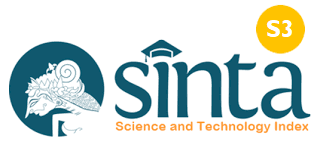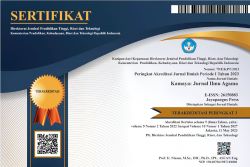Konstruksi Dakwah Multikultural Menurut Roza Melina Mazlin
DOI:
https://doi.org/10.37329/kamaya.v8i1.3714Keywords:
Multicultural Da'wah, Interreligious Dialogue, Multicultural Education, Cultural Diversity, Social MediaAbstract
Indonesia is a country with a high degree of cultural, religious, and ethnic diversity, which presents complex challenges in the implementation of Islamic da'wah. The conventional da'wah approach that tends to be homogeneous is considered incapable of answering the needs of a pluralist society. Therefore, multicultural da'wah emerged as an alternative that emphasized the importance of respecting diversity and inclusivity. This research aims to examine the concept of multicultural da'wah, its implementation in Indonesia, and its impact on the creation of social harmony. The research uses a qualitative method with an analytical descriptive approach. Data were collected through literature studies, in-depth interviews with religious leaders, and field observations on communities that implement multicultural da'wah. The results of the study show that multicultural da'wah emphasizes interreligious dialogue, tolerance-based character education, and the use of social media as the main means of conveying the message of da'wah. Intensive interfaith dialogue helps create space for mutual respect, reduce prejudice, and strengthen solidarity in a diverse society. Multicultural education also plays an important role in instilling the values of tolerance from an early age. Meanwhile, social media has proven to be an effective platform to reach the younger generation, expand the reach of da'wah, and increase public awareness of the importance of maintaining social harmony. This study also found several challenges that hinder the effectiveness of multicultural da'wah, including resistance from conservative groups who still adhere to traditional approaches and low understanding of multicultural literacy among preachers. The conclusion of this study is that multicultural da'wah is relevant as a strategic approach in creating an inclusive, fair, and harmonious society in Indonesia. By integrating multicultural education, interfaith dialogue, and modern technology, multicultural da'wah can strengthen peace and prevent conflicts stemming from identity differences.
References
Barnlund, D. (2008). Komunikasi Interpersonal: Teori dan Praktik. New York: HarperCollins.
Cichocka, A. (2016). Understanding Defensive and Secure National Identity. Current Directions in Psychological Science, 25(5), 338-342.
Deddy, M. (2005). Teori Konstruksi Sosial dalam Komunikasi. Jakarta: Prenada Media.
Gudykunst, W. B., & Kim, Y. Y. (2003). Communicating with Strangers: An Approach to Intercultural Communication. Boston: McGraw-Hill.
Gudykunst, W. B., & Kim, Y. Y. (2003). Communicating Across Cultures. Thousand Oaks, CA: Sage.
Hidayat, A., & Khalika, N. (2019). Pemanfaatan Media Sosial untuk Dakwah Inklusif. Jurnal Komunikasi Islam, 7(1), 45-56.
Hofstede, G. (2001). Cultural Dimensions and Their Impact on Communication. Thousand Oaks CA: Sage.
Hofstede, G. (2001). Culture’s Consequences: Comparing Values, Behaviors, Institutions, and Organizations across Nations. Thousand Oaks, CA: Sage.
Hidayat, A., & Khalika, N. (2019). Generasi Muda dan Media Sosial untuk Dakwah. Journal of Islamic Communication, 5(3), 67-78.
Ikhwan, M. (2019). Dakwah Multikultural dalam Konteks Indonesia. Jurnal Dakwah dan Komunikasi, 3(2), 120-135.
Kamba, A. (2018). Pendidikan Multikultural dalam Perspektif Islam. Yogyakarta: LKIS.
Kamba, A. (2018). Relativisme Budaya: Perspektif Islam. Yogyakarta: LKIS.
Madjid, N. (2002). Islam: Doktrin dan Peradaban. Jakarta: Paramadina.
Macionis, J. J. (2009). Sociology. Upper Saddle River, NJ: Pearson Prentice Hall.
Marchlewska, M., et al. (2019). Social Media And The Spread of Tolerance. Journal of Social and Political Psychology, 6(3), 230-245.
McLuhan, M. (1964). Understanding Media: The Extensions of Man. New York: McGraw-Hill.
Madjid, N. (2002). Tradisi Islam dalam Masyarakat Multikultural. Jakarta: Paramadina.
Marchlewska, M., et al. (2019). The Role of Media in Promoting Social Harmony. Media and Society, 8(2), 90-100.
Miller, C. A., & Josephs, L. (2009). Transformational Leadership in Multicultural Contexts. Journal of Leadership Studies, 3(4), 20-33.
Rakhmat, J. (1989). Psikologi Komunikasi. Bandung: Remaja Rosdakarya.
Downloads
Published
How to Cite
Issue
Section
License
Copyright (c) 2025 Kamaya: Jurnal Ilmu Agama

This work is licensed under a Creative Commons Attribution-ShareAlike 4.0 International License.
An author who publishes in the Kamaya : Jurnal Ilmu Agama agrees to the following terms:
- Author retains the copyright and grants the journal the right of first publication of the work simultaneously licensed under the Creative Commons Attribution-ShareAlike 4.0 License that allows others to share the work with an acknowledgement of the work's authorship and initial publication in this journal
- Author is able to enter into separate, additional contractual arrangements for the non-exclusive distribution of the journal's published version of the work (e.g., post it to an institutional repository or publish it in a book) with the acknowledgement of its initial publication in this journal.
- Author is permitted and encouraged to post his/her work online (e.g., in institutional repositories or on their website) prior to and during the submission process, as it can lead to productive exchanges, as well as earlier and greater citation of the published work (See The Effect of Open Access).
Read more about the Creative Commons Attribution-ShareAlike 4.0 Licence here: https://creativecommons.org/licenses/by-sa/4.0/.





